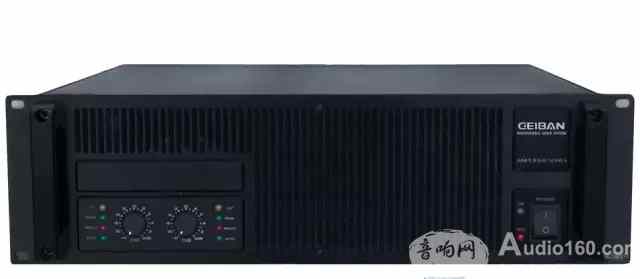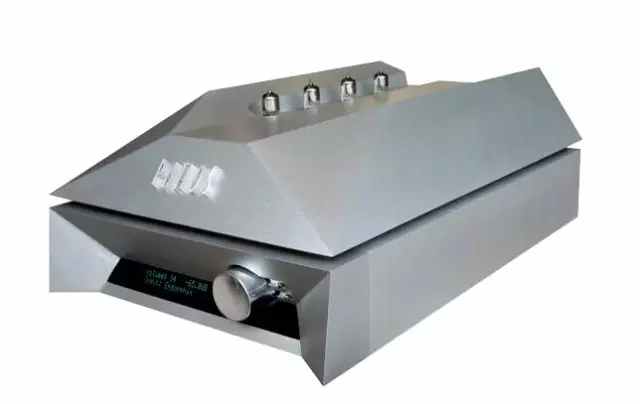The power amplifier is commonly known as the "amplifier". His role is to amplify the weak signal from the sound source or the preamplifier to promote the soundproofing of the speaker. The role of a good sound system amplifier is indispensable.
According to the different components used, the power amplifier has "amplifier" [tube amp], "stone machine" [transistor power amplifier], "IC power amplifier" [integrated circuit power amplifier]. In recent years, due to the use of new technologies and new concepts in the amplifier, the ancient vacuum device of the electron tube has been splendid, and its beautiful sound has caused many fans to fall. Almost all experienced enthusiasts have one. "IC Amplifier " rarely sees his shadow in the HI-FI amplifier because his tone is not comparable to the two amplifiers .

Power amplifiers can be broadly divided into three categories: "professional power amplifiers ", "civil power amplifiers " and "special power amplifiers ."
"Professional power amplifiers " are generally used for the amplification of conferences, performances, halls, halls, venues, and museums. The design is based on large output power, perfect protection circuit and good heat dissipation. Most of the "Professional Amplifier " sounds are used for HI-FI playback, and the sound is hard to listen to.
The "Civil Amplifier " detailed classification includes "HI-FI power amplifier ", "AV power amplifier ", "KALAOK power amplifier " and a so-called "comprehensive power amplifier " that integrates various commonly used functions.

"HI-FI amplifier " is the amplifier of our enthusiasts, and its output power is generally below 2X150W. The design is based on "beautiful tone, high fidelity". A variety of high-tech is concentrated in this power amplifier . Prices range from a few thousand yuan to several hundred thousand yuan. "HI-FI power amplifier " is divided into "split type" [individually separate the preamplifier], and "combined" [integrate the preamplifier and the rear unit]. Generally speaking, in the same grade model, the "split type" is higher than the "merger" in terms of signal-to-noise ratio and channel division degree [not absolute]. And it is easy to make a sound through the signal line. The combined machine has the advantages of convenient use and low cost. The output power of the cheaper combined machine is generally designed to be below 2X100W, and many manufacturers produce high-end combined machines of 2X100W or more.
"AV power amplifier " is a dark horse that has emerged in recent years. With the popularity of large-screen TVs and various image carriers, people are increasingly demanding "sitting at home to watch movies", so they have various audio and video functions. An integrated multi-function amplifier came into being. "AV" is the English AODIOVIDIO audio, the initials of the video. "AV power amplifier " from birth to the present, experienced the process of Dolby Surround, Dolby Pro Logic, AC-3, DTS, AV amplifier and ordinary power amplifier , the AV amplifier has AV select Dolby directional logic decoder, AC-3, DTS decoder, and five-channel power amplifier. And the digital sound field [DSP] circuit that adds the finishing touch to provide different sound field effects for various programs. However, since the AV power is placed on the signal circulation of the circuit, too many and complicated processing circuits have passed the "purity" of the sound, so the effect is not affected by the AV amplifier compatible with HI-FI playback. Ideal. This is why many HI-FI enthusiasts are not comfortable with AV amplifiers . QQ screenshot 20161108104130.jpg
"KALAOK amplifier " is also an amplifier developed in recent years. It differs from general power amplifiers in that "KALAOK amplifiers " have reverberators that have evolved from past BBD analog reverbs to the current DIGETAL digital reverberations], pitch shifters, and microphone amplifiers. In recent years, some manufacturers to market demand, the combination of a variety of functions including AV amplifier, KALAOK integrated amplifier, including the so-called "integrated amplifier", which is a hodgepodge amp, everything, can do nothing good, oriented to resist the power amplifier rural areas. "Special amplifier" as the name suggests is to use the power amplifier on special occasions, such as alarms, automotive low-voltage amplifiers, etc., this is no longer introduced.

The main performance indicators of the amplifier :
The main performance indicators of the power amplifier are output power, frequency response, distortion, signal to noise ratio, output impedance, damping coefficient and so on.
Output power: The unit is W. Since the measurement methods of different manufacturers are different, some names are different. For example, rated output power, maximum output power, music output power, peak music output power.
Music power: refers to the instantaneous maximum output power of the power amplifier to the music signal under the condition that the output distortion does not exceed the specified value.
Peak power: refers to the maximum music power that the amplifier can output when the amplifier volume is adjusted to the maximum without distortion.
Rated output power: The average output power when the harmonic distortion is 10%. Also called the maximum useful power. Generally speaking, the peak power is greater than the music power, the music power is greater than the rated power, and generally the peak power is 5-8 times the rated power.

Frequency response: Indicates the frequency range of the amplifier and the unevenness in the frequency range. The straightness of the frequency response curve is generally expressed in decibels [db]. The frequency response of household HI-FI amplifiers is generally 20HZ--20KHZ plus or minus 1db. The wider the range, the better. The frequency response of some of the best power amplifiers has been achieved 0--100KHZ.
Distortion: The ideal power amplifier should be a faithful reproduction of the input signal after it has been changed without any change. However, for various reasons, the amplified signal of the power amplifier is compared with the input signal, and different degrees of distortion are often generated. This distortion is distortion. Expressed as a percentage, the smaller the value, the better. The total distortion of the HI-FI amplifier is between 0.03% and -0.55%. The distortion of the power amplifier includes harmonic distortion, intermodulation distortion, cross distortion, clipping distortion, transient distortion, and transient intermodulation distortion.
Signal-to-noise ratio: refers to the ratio of various noise levels and signal levels output by the power amplifier . It is represented by db. The larger the value, the better. The SNR of the general household HI-FI amplifier is above 60db.
Output Impedance: The equivalent internal resistance presented to the speaker, referred to as the output impedance.
The performance of a power amplifier does not necessarily prove to have a good tone, which is something that first-time fans must realize. This is also the pursuit of many enthusiasts to explore. So for power amplifiers , we need to know more and understand how to use amplifiers better.
Signal Shielding Insulation Sleeve
KEYUACE Professional production : Signal shielding protection sleeves can be divided into shielded heat shrink tube, magnetic heat shrinkable tubing , zipper shielded textile sleeve, Zipper shielded braided sleeving, metal shielded braided mesh tube , self-winding overlapping wrap shielding protective sleeve .
Signal shielding insulation sleeve,Shielded heat shrink tube,Anti electromagnetic signal interference protected tube
Dong Guan KE YU New Material Technology co.,LTD , https://www.insulationtubing.com